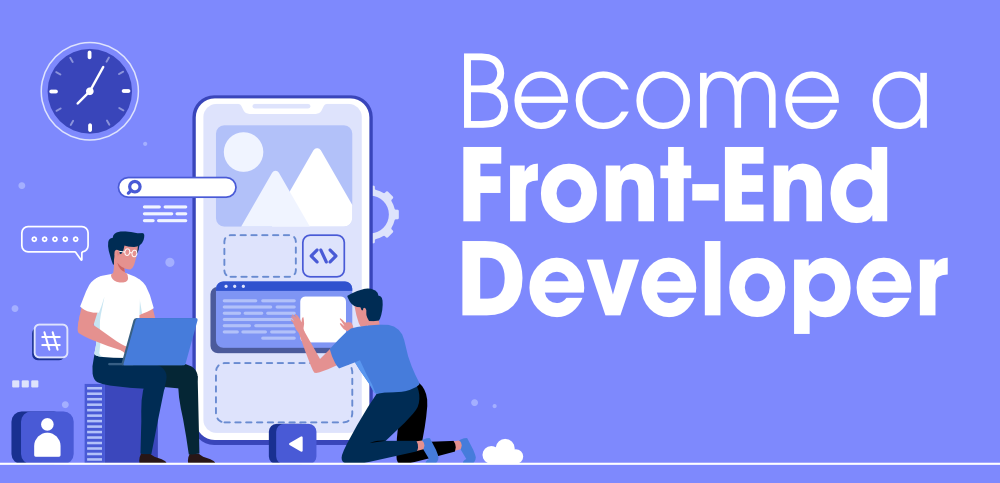A Beginners Guide to Front-End Development
Front-end development is an exciting part of web development that focuses on what users see and interact with. It involves designing and building the layout, style, and functionality of websites or applications. This guide will walk you through the essential concepts and tools needed to start your journey in front-end development.

Ahmet hassan
2024-12-19
21 views

What is Front-End Development? Front-end development is about creating the visible and interactive parts of a website or app. It includes defining the structure, styling it to look attractive, and making it interactive for users. HTML provides the structure, CSS adds style, and JavaScript brings it to life with interactivity. Together, these tools ensure a seamless user experience. Structure with HTML HTML, or HyperText Markup Language, is the backbone of every webpage. It organizes the content using elements like headings, paragraphs, and links. For example, h1 defines a heading, while p is used for a paragraph. Attributes like src or alt in images make the content more descriptive and accessible. Learning semantic HTML, like using header and footer, also improves your sites usability. Styling with CSS CSS, or Cascading Style Sheets, is used to make websites look visually appealing. It controls layouts, colors, fonts, and responsiveness. Techniques like Flexbox and Grid help create flexible designs that adapt to different screen sizes. Media queries further enhance this by ensuring your website works smoothly on various devices, making it user-friendly and professional. Interactivity with JavaScript JavaScript is what makes a website dynamic and interactive. It allows you to manipulate the Document Object Model (DOM), which represents the structure of a webpage. For instance, you can show or hide elements based on user actions. JavaScript also lets you fetch data from external sources using APIs, making your website more functional and engaging for users.
Tools for Front-End Development Text Editors and IDEs A good text editor is essential for writing clean and efficient code. Tools like Visual Studio Code, Sublime Text, or Atom provide features like syntax highlighting and code suggestions to make your work easier. Choosing the right editor can significantly improve your productivity as a front-end developer. Browser Developer Tools Every modern browser comes with developer tools that let you inspect, debug, and analyze your code in real-time. Chrome DevTools, for example, allows you to check the performance of your site, debug JavaScript, and tweak CSS live. These tools are invaluable for testing and refining your web projects. Version Control with Git Git is a system that tracks changes in your code, making it easy to collaborate and manage versions. Platforms like GitHub allow you to share your projects with others and showcase your portfolio. Version control is an essential skill for any developer, ensuring that your progress is saved and organized. Best Practices Semantic HTML Using semantic HTML tags not only makes your code cleaner but also improves your sites accessibility and search engine ranking. Tags like nav for navigation and article for content give meaning to your structure, benefiting both users and search engines. Organized CSS Keep your CSS organized by using consistent naming conventions and comments. Consider using preprocessors like SASS, which allow you to write modular and reusable CSS. This approach saves time and makes your stylesheets easier to maintain. Optimized JavaScript Write efficient JavaScript by minimizing DOM manipulation and using modern features like ES6+ syntax. Testing your code regularly ensures it performs well across different browsers and devices, providing a better experience for users.
Learning Resources Online Courses and Tutorials Websites like FreeCodeCamp and Codecademy offer free and interactive courses on HTML, CSS, and JavaScript. MDN Web Docs is another excellent resource for in-depth knowledge and examples. These platforms provide a great starting point for beginners. Books for Beginners HTML and CSS: Design and Build Websites by Jon Duckett is a visually engaging book for learning web design basics. Similarly, JavaScript and JQuery: Interactive Front-End Web Development helps you understand JavaScript concepts in a simple way. These books are perfect companions for hands-on learning. Practice Platforms Platforms like CodePen and Frontend Mentor let you practice your skills on real-world projects. They provide challenges and examples to improve your coding abilities. LeetCode is another platform for solving JavaScript challenges and sharpening your problem-solving skills.
Conclusion Front-end development is a fulfilling career path that combines creativity and technology. By mastering HTML, CSS, and JavaScript, you can create websites that are both beautiful and functional. Use the tools and resources mentioned in this guide to practice regularly and build your confidence. With time and dedication, you can become a skilled front-end developer and bring your ideas to life on the web.
If you like what you see, let's work together.
I bring rapid solutions to make the life of my clients easier. Have any questions? Reach out to me from this contact form and I will get back to you shortly.